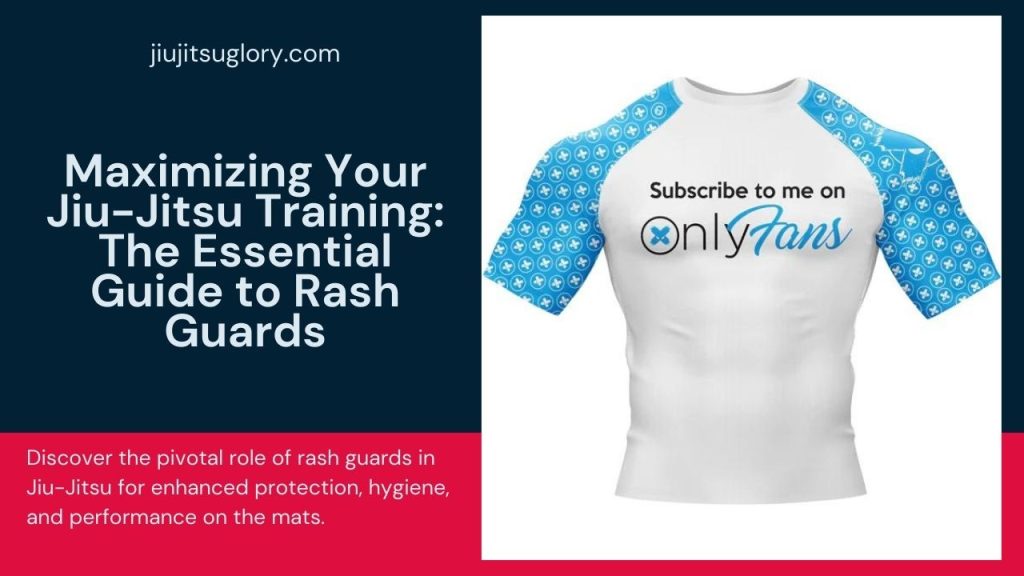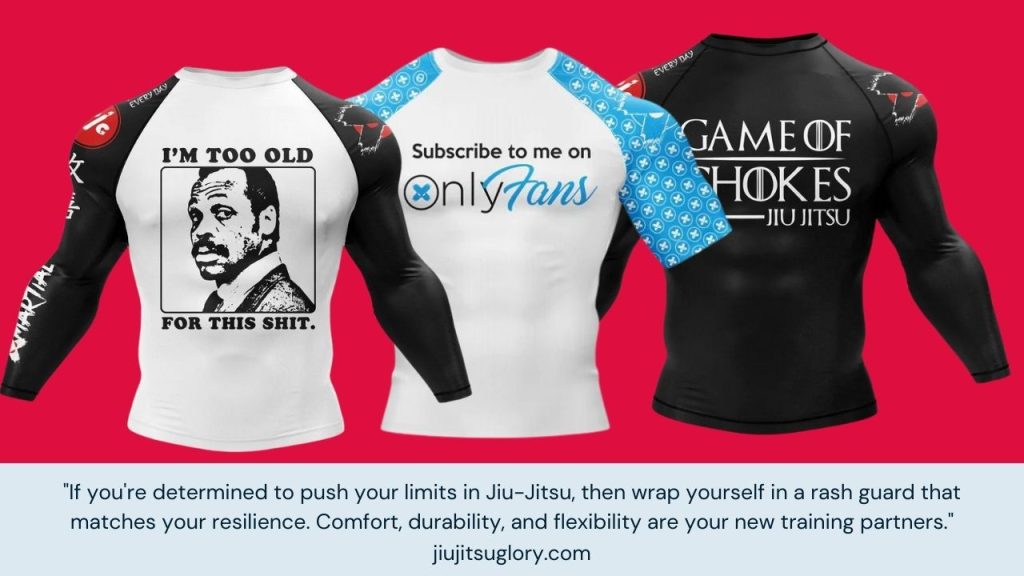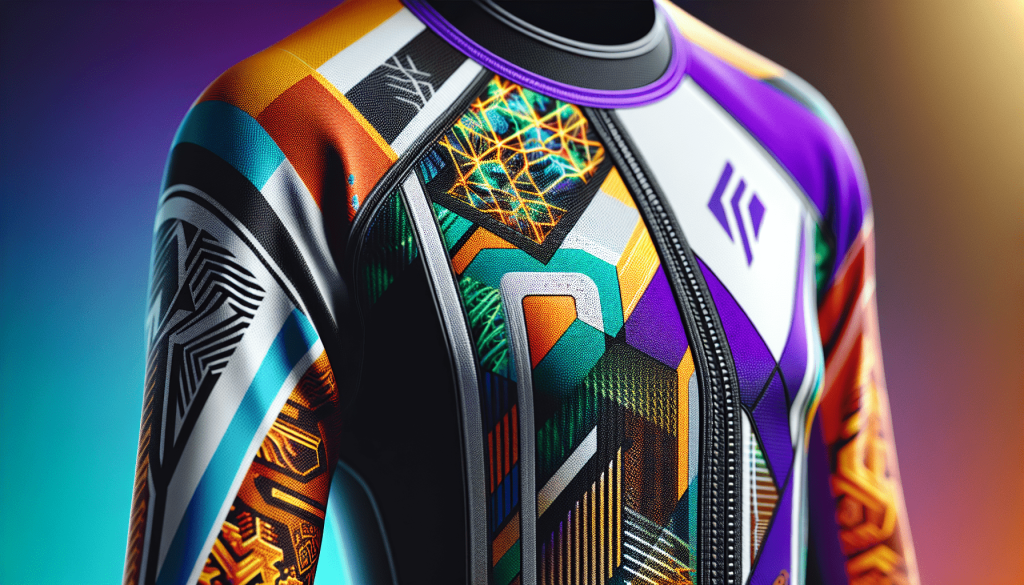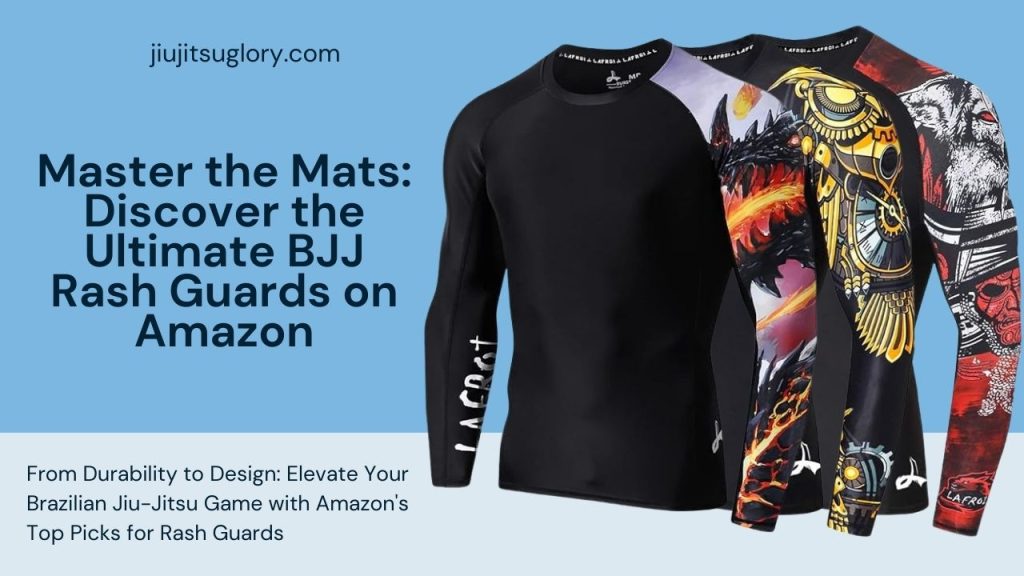Have you ever wondered if you need a rash guard for jiu-jitsu? If you’re new to the sport or just curious, this guide will give you all the necessary information.
Rash guards are popular in jiu-jitsu, but are they just a trend, or do they have real benefits? Let’s dive into why wearing a rash guard during training is brilliant.
We’ll cover protection from mat burns, hygiene benefits, and muscle support. Stay tuned!
Do You Need a Rash Guard for Jiu-Jitsu?

A rash guard is a form-fitting athletic shirt made from lightweight materials such as Lycra, spandex, or nylon.
It is specifically designed to be worn during intense physical activities, such as jiu-jitsu, to provide a layer of protection and support to the wearer.
The primary purpose of wearing a rash guard in jiu-jitsu is to protect the skin from mat burns, scratches, and rashes during grappling and ground fighting.
Additionally, rash guards provide essential benefits such as hygiene, reduced friction, muscle compression, improved grip, and climate control.
While not mandatory, many practitioners wear rash guards for these reasons and the overall comfort they provide.
Benefits of Using a Rash Guard for Jiu-jitsu

- Hygiene and Cleanliness: Rash guards create a barrier between your skin and the mat, reducing contact with sweat, bacteria, and other irritants. This lowers the risk of skin infections and keeps the training environment clean.
- Skin Protection: Rash guards protect against mat burns, scratches, and scrapes. They let you focus on training without the distraction of pain or discomfort.
- Reduced Friction: Rash guards’ smooth material reduces friction between your skin, the mat, and your opponent, allowing smoother transitions and movements.
- Muscle Compression: Rash guards provide mild compression, which helps with blood circulation, reduces muscle vibration, and can decrease fatigue.
- Improved Grip: A rash guard’s tight fit can enhance your grip on training partners and the mat, especially in no-gi training.
- Climate Control: Rash guards help manage temperature and moisture. They wick away sweat, keeping you dry and comfortable. They also provide warmth in colder conditions and cooling in hot climates.
See also: The Ultimate BJJ Compression Shirt to Elevate Your Game!
Things to Consider Before Buying a Rash Guard

- Rules and Regulations: Check the laws of your jiu-jitsu academy or competition. Some places require specific rash guard sleeve length, color, or logo.
- Material Quality and Durability: Choose rash guards from high-quality, durable fabrics like nylon or Lycra blends. Read reviews to ensure they hold up over time.
- Size and Fit: A snug fit is crucial for muscle compression and minimizing excess fabric that can be grabbed during training. Refer to the size chart and consider your height, weight, and body type.
- Long-Sleeve or Short-Sleeve: This depends on personal preference. Long sleeves offer more protection, while short sleeves are more breathable.
- Design and Style: Rash guards come in many designs and styles. Choose one that reflects your personality or represents your academy.
- Budget: Prices vary widely. Set a budget that balances quality and affordability.
How to Take Care of Your Rash Guard?

- Washing Instructions: Follow the manufacturer’s instructions. Usually, machine wash in cold water on a gentle cycle. Avoid harsh detergents and bleach.
- Drying Methods: Air dry your rash guard to prevent shrinkage and damage. Avoid direct sunlight and dryers.
- Avoiding Odors and Bacteria: Remove your rash guard from your gym bag immediately and air it out before storing it.
- Preventing Damage: Be gentle when putting on or taking off your rash guard. Rotate between multiple rash guards to minimize wear and tear.
Can a Rash Guard Be Worn Under a Gi?
Rash guards can be worn under a gi during traditional jiu-jitsu training. Many practitioners prefer this combination for the added layer of protection, improved grip, and hygiene benefits.
Wearing a rash guard under a gi can prevent the gi fabric from directly rubbing against the skin, reducing the risk of discomfort and irritation.
Additionally, the compression the rash guard provides can help support muscles and enhance performance during training.
See also: 8 Essential Jiu-Jitsu Hygiene Practices for Beginners
How Often Should I Replace My Rash Guard?

The lifespan of a rash guard can vary depending on factors such as frequency of use, intensity of training, and overall care.
You should inspect your rash guard regularly for signs of wear and tear, such as stretched stitches, fraying fabric, or fading colors.
If the rash guard shows noticeable deterioration, it may be time to replace it to ensure optimal performance and functionality.
A high-quality rash guard can typically last several months to a year with proper care.
Conclusion

Wearing a rash guard during jiu-jitsu training offers many benefits, including skin protection, hygiene, reduced friction, muscle compression, improved grip, and climate control.
Choose a rash guard that fits well, meets your needs, and suits your style. Take good care of it, and it will enhance your training experience.
So, invest in a high-quality rash guard and enjoy the comfort and protection it provides on the mats!
Related: The search for the perfect soap for Jiu-Jitsu enthusiasts is about maintaining cleanliness and embracing a lifestyle that prioritizes health, hygiene, and the art of martial arts. Read More!


